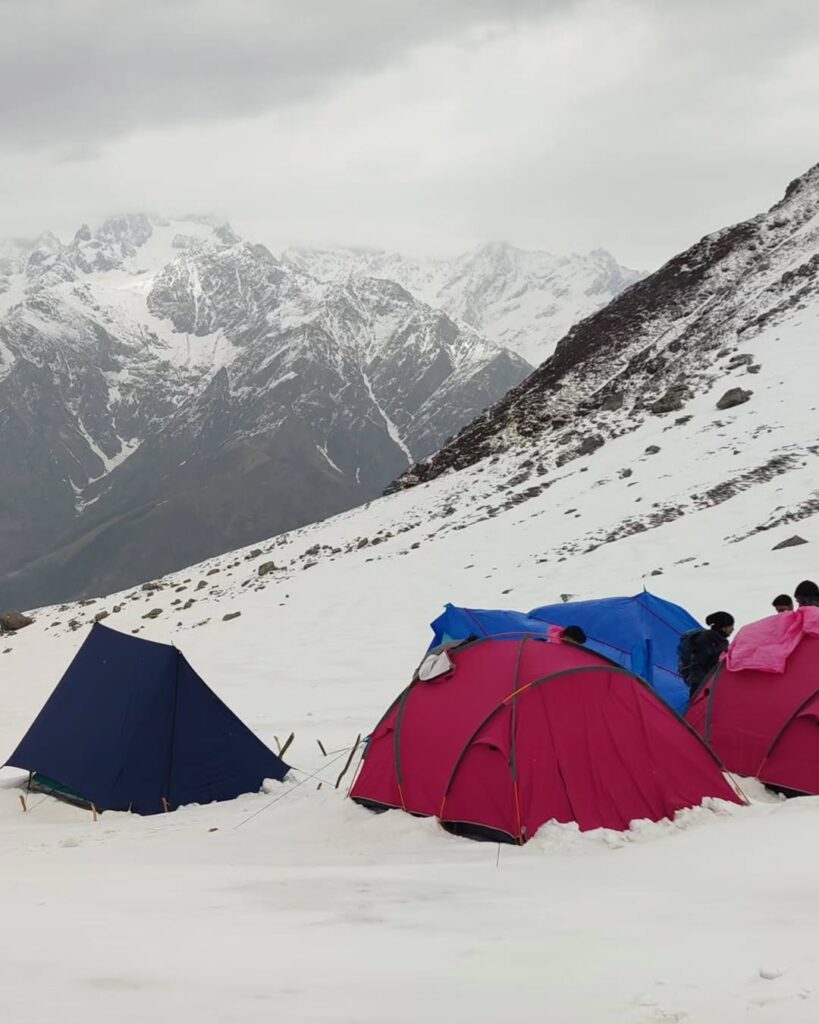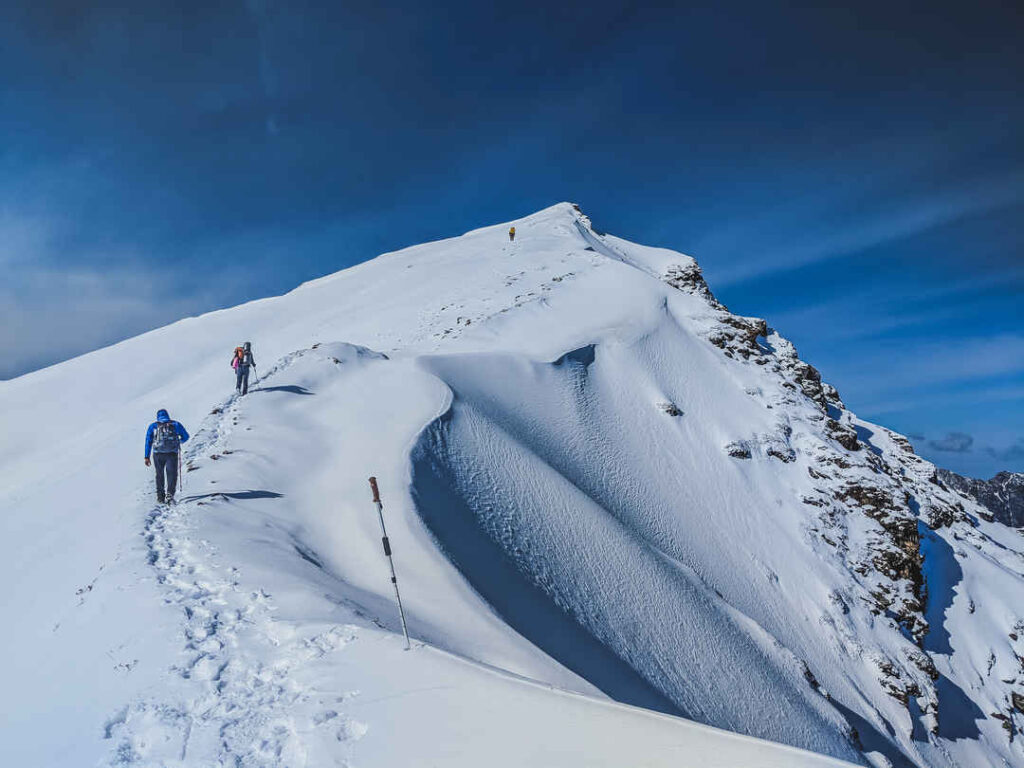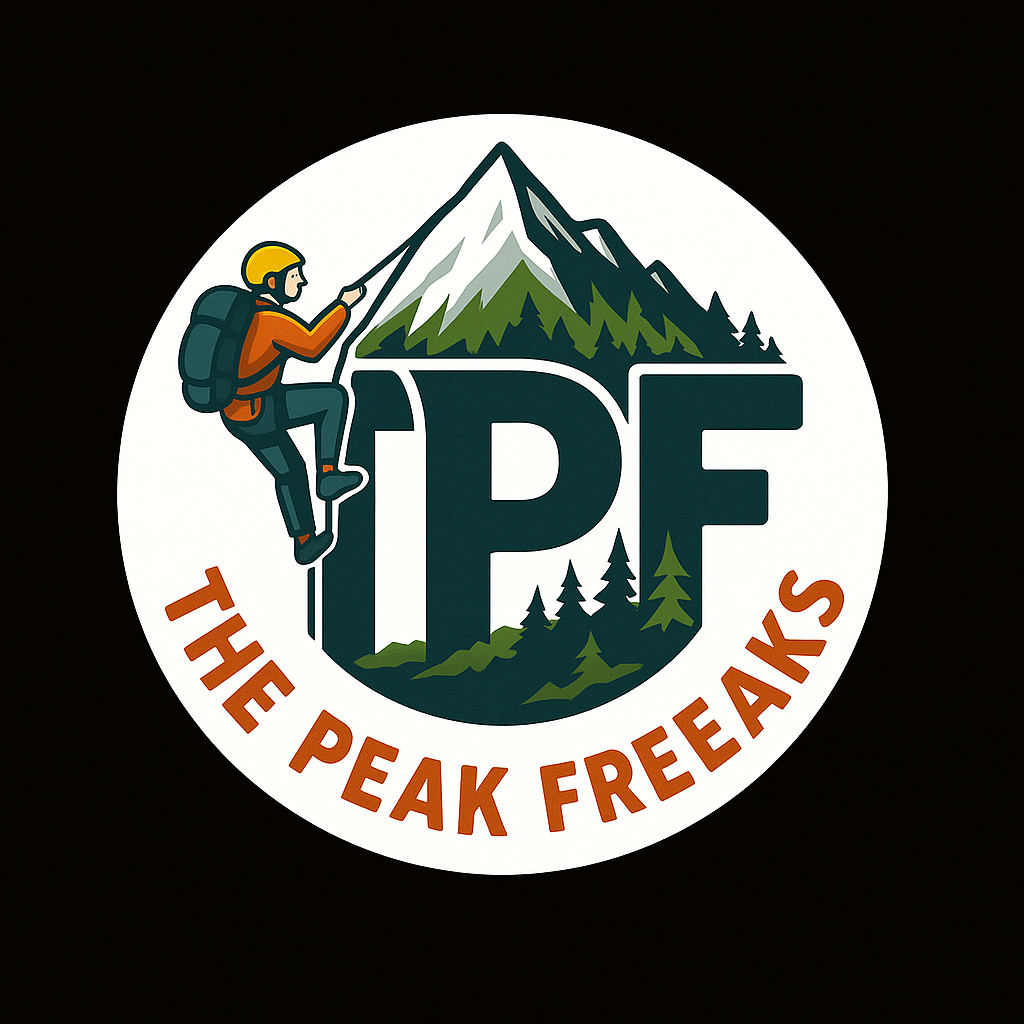Sar Pass Trek




from
Rs.(5,999)
6999
Duration
(5D/4N)
Height
(13,850ft)
Distance
(26km)
Overview:
The Sar Pass Trek is one of Himachal Pradesh’s most stunning and beginner-friendly high-altitude treks, located in the enchanting Parvati Valley. This trail offers the perfect mix of diverse landscapes, from dense pine forests and charming Himalayan villages to rolling alpine meadows, blooming rhododendrons, and snow-covered passes.
The trek starts in Kasol, a serene and vibrant hamlet nestled along the banks of the Parvati River, often called the backpackers’ paradise. As you ascend, the scenery shifts dramatically—from thick deodar forests and bubbling streams to open meadows that seem to stretch endlessly. You’ll pass through the quaint and rustic village of Grahan, where wooden houses and local hospitality introduce you to the heart of Himachal.
As the trail climbs higher, you’ll reach scenic campsites like Min Thach and Nagaru, each offering breathtaking vistas of towering Himalayan peaks and deep valleys below. From Nagaru, a thrilling early-morning climb takes you to the majestic Sar Pass, standing tall at 13,850 feet (4,220 meters). The name ‘Sar’ means ‘lake’ in the local language, referring to a small frozen lake near the pass that gives this trek its identity.
One of the trek’s most unforgettable highlights is the snow walk and slide across the glacier after crossing the pass—a moment that delivers a surge of adventure and adrenaline, perfect for first-timers experiencing Himalayan snow.
The descent leads you to Biskeri Thach, a lush alpine meadow dotted with wildflowers, offering the ideal setting to rest and reflect before finishing your journey at Barshaini. From here, you’ll drive back to Kasol, your adventure coming full circle.
Unlike more rugged or technical Himalayan treks, Sar Pass is non-technical, making it ideal for those who are new to trekking yet eager to experience snow, altitude, and life in the wild. Despite its accessibility, the trail offers plenty of challenges and thrills, making it just as memorable for experienced hikers.
The Sar Pass Trek is more than just a trail—it’s a journey through Himachal’s raw beauty, filled with friendships formed around campfires, moments of reflection in vast meadows, and the sheer joy of standing above the clouds. Whether you seek solitude, adventure, or a digital detox, Sar Pass has something magical for every soul.
Trek Highlights:
- ✅ Altitude: 13,850 ft — perfect for beginners looking to experience snow and high-altitude trekking
- ✅ Stunning campsites: Stay under starry skies at Min Thach, Nagaru & Biskeri Thach
- ✅ Pass through pine forests, rhododendron valleys & snowy alpine stretches
- ✅ Cross the Sar glacier with ropes (guided by professionals)
- ✅ Experience traditional Himalayan hospitality and remote village life
- ✅ Best months: May to June & September to early October
Why You’ll Love the Sar Pass Trek
The Sar Pass Trek is a perfect blend of adventure, natural beauty, and cultural charm—ideal for anyone seeking their first Himalayan trekking experience or a soul-refreshing escape. Starting from the vibrant backpacker town of Kasol, the trail takes you through dense pine forests, idyllic meadows, quaint Himalayan villages, and snow-covered landscapes, offering an ever-changing backdrop that keeps every step exciting. As you ascend, the views grow more dramatic—culminating in the thrilling Sar Pass crossing at 13,850 ft, where snowfields stretch endlessly under a crisp blue sky. The descent brings even more joy with a fun snow slide, adding a dose of adrenaline to your adventure. Along the way, you’ll camp under starlit skies, wake up to golden sunrises, and share stories around bonfires with fellow trekkers. Whether it’s the peaceful vibe of Grahan village, the raw thrill of high-altitude snow trekking, or the unforgettable camaraderie of the trail, Sar Pass promises memories that will stay with you for a lifetime.
Trek Difficulty Level
.✅ Difficulty Level: Easy to Moderate
• Maximum Altitude: 13,850 ft (4,220 m) at Sar Pass
• Trek Duration: 4–5 trekking days
• Daily Trekking: 6–10 km/day (4–6 hours on average)
• Trail Conditions: Forest trails, meadow crossings, snow patches, steep climbs and descents
• Temperature Range: 0°C to 18°C (can drop below freezing at higher camps like Nagaru)
• Best For: Beginners, first-time high-altitude trekkers, and intermediate adventurers
• Acclimatisation: Gentle altitude gain; manageable for most with basic fitness
• Snow Walk & Slide: Involves walking and sliding on snow after Sar Pass — fun but physically demanding
🗓️ Sar Pass Trek – 5 Day Detailed Itinerary
Region: Parvati Valley, Himachal Pradesh
Starting Point: Kasol
Altitude: Max 13,850 ft
Trek Grade: Easy to Moderate
Duration: 5 Days / 4 Nights
📍 Day 1: Kasol to Grahan Village (7 km trek | 4-5 hours)
- Altitude Gain: 5,200 ft to 7,700 ft
- Begin your journey from the scenic town of Kasol, following the trail along the Parvati River.
- The path gradually ascends through dense pine forests, offering glimpses of waterfalls and wildlife.
- Reach Grahan Village, a beautiful traditional Himalayan hamlet known for its wooden houses and warm hospitality.
- Enjoy your first night under the stars in camps set up beside the village.
📍 Day 2: Grahan to Min Thach (7 km trek | 5-6 hours)
- Altitude Gain: 7,700 ft to 9,800 ft
- The trail becomes steeper today, winding through rhododendron forests and alpine pastures.
- Witness the valley open up with panoramic views as you reach Min Thach, a meadow used by local shepherds.
- The campsite here offers stunning sunset views and a peaceful setting for an overnight stay.
📍 Day 3: Min Thach to Nagaru (6 km trek | 4-5 hours)
- Altitude Gain: 9,800 ft to 12,500 ft
- The trek turns more challenging with a steep and snowy ascent.
- As you climb, the air gets thinner and the temperature drops, but the views become more surreal.
- Reach Nagaru, the highest campsite, perched on a ridge overlooking the Parvati Valley.
- Prepare for an early morning pass crossing; rest well.
📍 Day 4: Nagaru to Sar Pass (13,850 ft) – Biskeri Thach (10-11 km trek | 7-8 hours)
- Altitude Gain & Descent: 12,500 ft → 13,850 ft → 11,000 ft
- Start early to cross Sar Pass, the highlight of the trek.
- The climb is steep and snowy, but incredibly rewarding with 360° Himalayan views.
- After a short break at the top, begin your descent—this section includes snow slides, the most fun part of the trek!
- Reach Biskeri Thach, a vast meadow surrounded by peaks, where you camp for the night.
📍 Day 5: Biskeri Thach to Barshaini (via Pulga or Tosh) – Drive to Kasol (8-9 km trek + 1 hr drive)
Your incredible Sar Pass adventure ends here with beautiful memories and new friendships.
• Descent: 11,000 ft to 7,000 ft
• Trek downhill through thick forests and meadows dotted with wildflowers.
• Pass charming villages like Pulga or Tosh, famous for their serene beauty.
• Reach Barshaini, where your vehicle awaits for a short drive back to Kasol.
✅ Inclusions — What’s Included in Your Trek Package
At The Peak Freaks, we aim to provide a seamless, safe, and immersive trekking experience. Your trek fee includes:
🏕️ Accommodation:
- Stay in high-quality alpine tents on twin/triple sharing basis during the trek.
- Sleeping bags, foam mattresses, and pillows provided at each campsite.
- Separate kitchen and dining tents at campsites.
🍽️ Meals:
- All meals during the trek – nutritious, freshly prepared vegetarian food (breakfast, lunch, evening tea/snacks, and dinner).
- Clean drinking water (boiled or filtered) available at all camps.
- Meals start with lunch on Day 1 and end with breakfast on Day 5.
👨✈️ Trek Team & Safety:
- Experienced and certified trek leaders and local guides for the entire route.
- Support staff including cook, helpers, and porters for logistics and camp setup.
- First Aid medical kit, oxygen cylinder, and pulse oximeter for altitude monitoring.
- Radio/walkie-talkie for communication where needed.
🧳 Logistics:
- Arrival: Trekkers are expected to reach Kasol, the base camp, on their own. Kasol is well-connected by road from Bhuntar (nearest airport and bus stop).
- Trek Start: The trek begins on foot from Kasol, so no vehicle transfer is needed at the start.
- Return: On the final day, after descending to Barshaini, shared cabs will be arranged to drop trekkers back to Kasol (approximately a 1-hour drive).
- Mule/porter support for carrying common equipment (tents, kitchen gear, etc.).
- Note: All internal transfers during the trek (Barshaini to Kasol) are included in the trek cost. Travelers must make their own arrangements to reach and depart from Kasol.
💼 Other Perks:
- Pre-trek briefing and orientation in Manali.
- Basic hygiene kit at camps (toilet tents, wash basins, etc.).
- Access to emergency backup vehicle at Barshaini (subject to availability).
- Certificate of completion at the end of the trek.
❌ Exclusions — What’s Not Included
While we cover most essentials, a few things are not included and need to be arranged by you:
🚐 Transport:
- Travel to and from Kasol from your city/home (bus/train/flights).
- Any personal cab or private vehicle bookings for early return or side visits.
🥾 Personal Equipment:
- Trekking gear like shoes, jackets, poles, gloves, and backpack (can be rented).
- Personal medicines, sunscreen, lip balm, and toiletries.
- Power bank, headlamp/torch with extra batteries.
💰 Other Costs:
• Tips/gratuity for guides, cooks, or staff (optional, but appreciated).
• Any costs arising due to delays, natural calamities, roadblocks, or medical emergencies.
• Hotel stay in Kasol before or after the trek.
• Snacks, bottled water, or beverages not included in group meals.
🧳 Things to Carry for Pass Pass Trek
Packing smart is key for a safe and comfortable Himalayan experience. Here’s your complete checklist:
🧥 Clothing (Layering is essential)
- 2 full-sleeve quick-dry t-shirts (one for trek, one spare)
- 1 light fleece jacket or pullover
- 1 heavy down or padded jacket (for high-altitude cold)
- 2 pairs of trekking pants (preferably quick-dry; avoid jeans)
- Thermal innerwear (top & bottom) – 1 pair
- 3 pairs of woolen/trekking socks + 2 regular socks
- 1 woolen cap + 1 sun cap or hat
- 1 pair of gloves (1 woolen, 1 waterproof if possible)
- Raincoat/poncho (a must for sudden showers)
- Buff or scarf (for neck/head protection)
🥾 Footwear
- Sturdy trekking shoes with good grip and ankle support (already broken-in)
- 1 pair of slippers/sandals for campsites
🎒 Bags
- 1 backpack (50–60L) with rain cover
- 1 daypack (10–15L) for water, camera, and essentials (if you’re offloading main bag)
🧼 Toiletries & Hygiene
- Toothbrush, toothpaste, face wash
- Biodegradable soap or wipes
- Quick-dry towel
- Toilet paper & tissues
- Hand sanitizer, lip balm, moisturizer, and sunscreen (SPF 50+)
- Menstrual hygiene products (if applicable)
💊 Personal Medications & First Aid
- Personal medication (if any)
- Basic medicines: Crocin, Combiflam, Avomine (motion sickness), Digene, ORS, antiseptic cream
- Band-aids, crepe bandage, cotton, Dettol
- Diamox (only after consulting your doctor) for altitude sickness
🔦 Accessories
- Headlamp/torch with extra batteries
- Sunglasses (UV-protected, wraparound preferred)
- Water bottle (1L) or hydration pack
- Energy bars, dry fruits, ORS packets, glucose
- Trekking pole (optional but helpful for beginners)
📱 Miscellaneous
- Power bank (mobile charging is not available on trail)
- Camera/GoPro (optional)
- Small notebook & pen (for journaling)
- Identity proof (Aadhaar card or passport photocopy)
⚠️ Important Trekking Tips
Make the most of your Himalayan adventure with these helpful tips from The Peak Freaks team:
🧠 Before the Trek
- Prepare physically: Cardio, squats, and leg strengthening exercises 3–4 weeks before the trek.
- Avoid alcohol and smoking at least 1 week before — they affect your oxygen levels.
- Get a medical check-up if you have existing health conditions or are above 45.
🌄 During the Trek
- Hydrate constantly — drink at least 3–4 liters of water daily.
- Pace yourself — slow and steady wins the mountain! Avoid racing ahead.
- Don’t skip meals — your body needs fuel for high-altitude hiking.
- Inform your trek leader immediately if you feel dizzy, breathless, or nauseous.
🛑 Safety & Environment
• No littering — keep the Himalayas clean. Use waste bags for wrappers or plastic.
• Stay with the group — straying from the trail can be risky.
• Respect the local culture and wildlife — be a responsible trekker.
• Always keep head and ears covered in high winds or cold conditions.
Enjoy Our Best Quality Trekking Experience
Experience the best of Himachal with ThePeakFreaks—expert-guided treks, stunning views, and top-quality service for every adventure lover.
1. What is included in the trekking package
Our packages typically include accommodation, meals, guides, permits, and transportation from base to trek start. Exact inclusions vary by trek.
2. What should I pack for a Himachal trek
Essential items include trekking shoes, layered clothing, rain gear, water bottles, basic medicines, flashlight, and ID proof. A full checklist is provided upon booking.
3. Is prior trekking experience necessary
No, many of our treks are beginner-friendly. However, we also offer challenging routes for seasoned trekkers.
4. How safe are the treks organized by ThePeakFreaks
Safety is our top priority. Our expert guides, first-aid kits, and emergency protocols ensure you’re in good hands throughout.
5. What are the best months to trek in Himachal need to prepare
April to June and September to November are ideal due to clear skies, pleasant weather, and accessible trails.
6. Are solo trekkers allowed to join
Absolutely! Solo travelers can join group departures and connect with like-minded adventurers.

